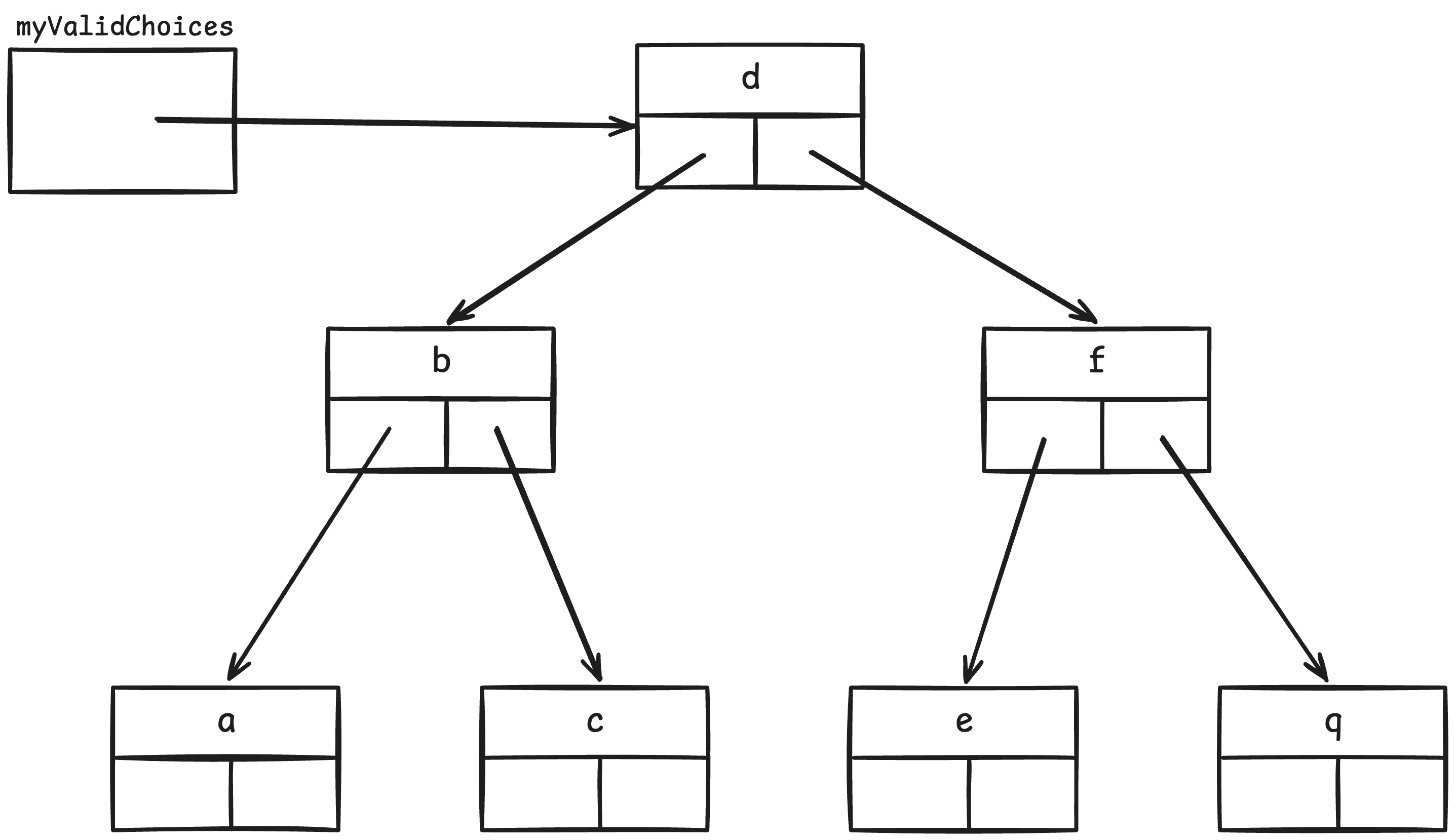Lab 12: The STL set and map Containers

Objectives
In this exercise, you will:
- Use the STL set container to store a set of values.
- Use the STL map container to create an associative array whose keys are string values, and whose values are sets of strings.
- Use iterators to access the items in these containers.
Introduction
This lab/project has you creating a simple database of movies and the actors in the movies. Then the user of the program can choose to:
- Show all movies
- Show all actors in a movie
- Show all movies an actor was in.
- The main data structure you’ll create is an STL map that maps:
movie name → set of actors in the movie.This is a complex data structure: each entry in the map contains a set (Thus, we’ll have a binary search tree of binary search trees).
We’ll use the Bridges database of movie information. When you get the information from the Bridges API, you get a vector of objects of type MovieActorWikidata. Each object contains a movie and an actor in the movie (among other things). If you printed out those two things from MovieActorWikidata objects, you might see these values.
Movie: Young at Heart Actor: Alan Hale, Jr.
Movie: Wichita Actor: Carl Benton Reid
Movie: We're No Angels Actor: Aldo Ray
Movie: Young at Heart Actor: Doris Day
Movie: Wichita Actor: Joel McCrea
etc...Thus, you see that the objects are not in any order, and do not have all the actors in a movie in each object. To get all actors for a movie, you’ll have to iterate over all the elements of the vector and learn 1) all the movies, and 2) all the actors in the movies.
Note that sometimes an actor is listed multiple times for a movie. But, because we are using an STL set, it automatically handles attempts to insert an element multiple times.
Getting Started
Accept the invitation from github classroom and use git clone, as usual.
Edit the README.md file to add both your names and your partner’s, and share the git repo, as usual.
Part II. The App Class
The file App.h contains the declaration of class App. This class uses an STL map to store (movieName, set of actors) pairs:
map<string, set<string>> movies_by_name; // key is movie name; value is set of actors' names.Note that the code actually reads like this:
db_type movies_by_name;In order to not have to type map<string, set<string>> too often, I created two typedefs at the top of App.h:
typedef map<string, set<string>> db_type;
typedef map<string, set<string>>::iterator db_iter;Now, the code can use db_type and db_iter instead of map<string, set<string>> and map<string, set<string>>::iterator, respectively. So much easier to type!
Constructor
The App constructor has been defined for you. It takes a vector of MovieActorWikidata entries as a parameter.
The constructor code contains the algorithm you should implement to process these entries, building up entries in the movies_by_name map.
If you use the hint I gave in class about how accessing a map with [ ] will either create a new entry or update it if it already exists, then the body of the for loop is one line. Otherwise, the body is about 9 lines, and is very tricky code.
Write the code now. This code will be difficult to test until you implement the next step.
Show All Movies Option
Implement code for showAllMovies(), to iterate through all entries in movies_by_name, and print out the movie name and then iterate through all actors for that movie, printing them out. I’ve indented the actor’s name, so the output is more readable.
You might find it very useful to make the inner loop a separate function. I called that function showActorsInAMovie(). It takes an iterator “pointing” to an object from the movies_by_name collection, and iterates over the “second” field (a set), printing each actor in the set. If you implement this function, you’ll find you can use it again below.
When you think your code is correct (for this and the previous step), try loading all movies from 1955 and printing them all out. The first movie should be:
Movie: 5 Against the House
Alvy Moore
Brian Keith
George Cisar
Guy Madison
Hugh Sanders
Jean Willes
John Larch
John Zaremba
Kathryn Crosby
Kerwin Mathews
Kim Novak
Mark Hanna
Robert Sampson
William ConradThe last movie you should see should look like this:
Movie: Young at Heart
Alan Hale, Jr.
Doris Day
Dorothy Malone
Elisabeth Fraser
Ethel Barrymore
Frank Ferguson
Frank Sinatra
Gig Young
Lonny Chapman
Robert KeithShow All Actors For a Single Movie Option
Complete the code in the getMovienameAndShowActors() method. If you created a function to show all actors for a given movie, then you are half done already.
Show All Movies For an Actor Option
Finally, implement this option. Create a set of strings (I called my variable movies_by_actor.) And then go through all movies, looking for that actor. When you find him/her, add the movie to the movies_by_actor. Then, when you are done, print out the set.
Here is a sample output:
Enter an actor name to show all movies for that actor: Alfred Hitchcock
Rear Window
The Trouble with Harry
To Catch a ThiefTurn In
Submit your project to github as usual. If you worked with your lab partner on the project, make sure you update README.md to include both of your names/login-ids.
Grading Rubric
21 points total:
- Menu class works: 2 pts.
- App constructor: 5 pts.
- Each App menu item: 4 pts each: 12 pts.
- Hospitable code: code is clean and neat, perfectly indented, with good variable names, etc.: 2 pts.
Ways students have lost points in the past:
- -2: showAllMovies needs to show the names of each movie’s actors
- -2: getMovieNameAndShowActors implementation is incorrect, the result of movies_by_name.find will return the iterator value you want to pass to showActorsInAMovie, the for loop is unnecessary
- -2: code is very poorly indented
- -2: parameter names are very poorly chosen
